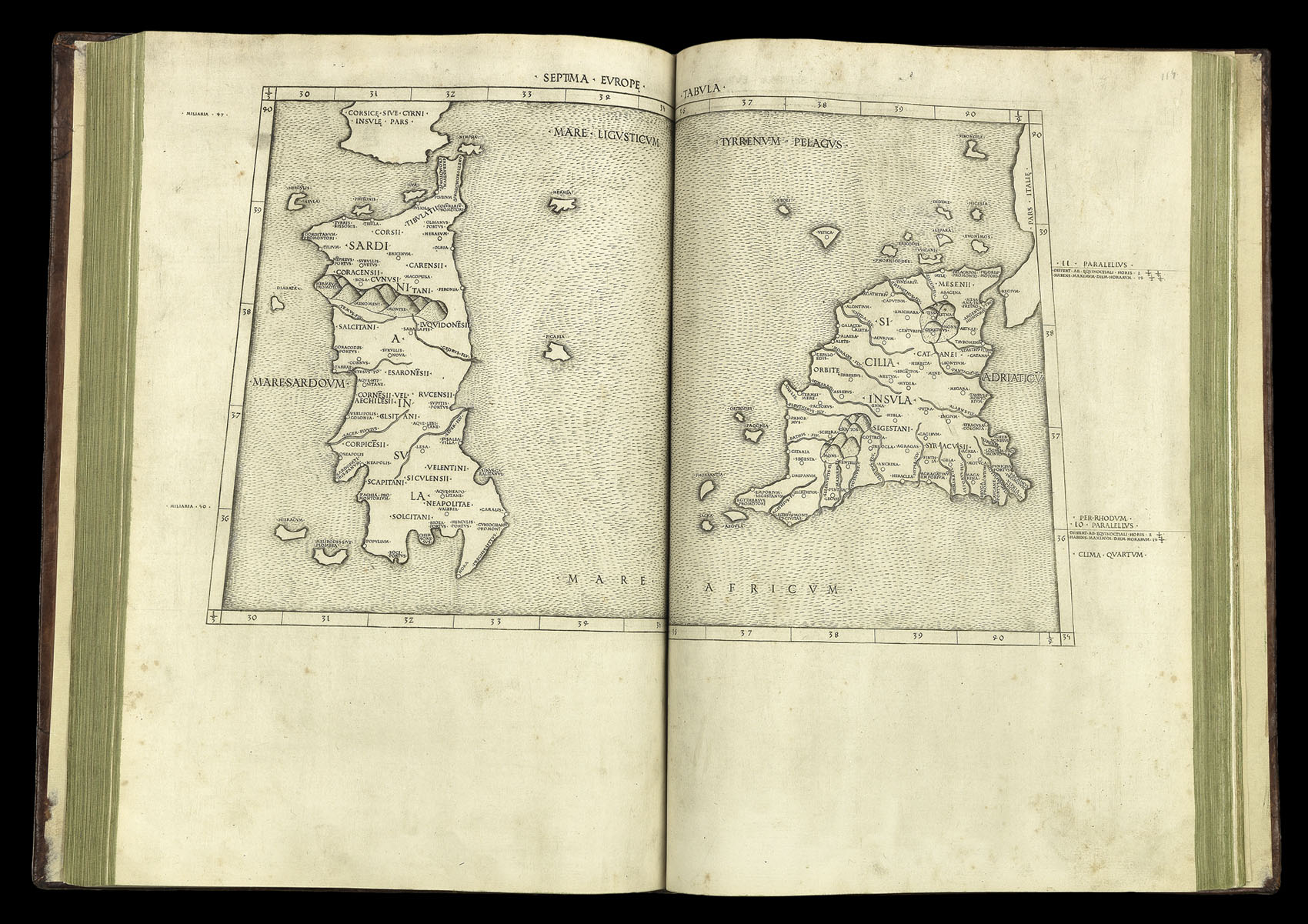
Septima Europe Tabula
- Author: PTOLEMAEUS, Claudius
- Publication place: [Rome
- Publisher: Petrus de Turre
- Publication date: 4 November, 1490].
- Physical description: Double-page engraved map
- Inventory reference: 5252
Notes
This map of the islands of Sardinia and Sicily is one of the earliest maps of the region.
Map from the beautiful second Rome edition of Ptolemy’s Geographia. “This handsome edition is a reprinting of the copper-plate maps of the 1478 Ptolemy [the first Rome edition by Conrad Sweynheym and Arnold Buckinck, whose] maps are considered the finest Ptolemaic ones produced up to the time that the great Mercator engraved his Ptolemy of 1578… It is believed that Sweynheym was the one who first thought of applying the very new art of copper-engraving to the printing of maps, and he might have taken a hand in the actual engraving of them himself” (World Encompassed). While the Bologna edition of 1477 was the first atlas to use copperplate maps, the present series is generally regarded as superior for its clear captions, accurate projections and overall design. Also, there are indications the Bologna edition was hurried through the press: the captions were not engraved but stamped into the plates. The early Italian Ptolemys, particularly the Rome editions, are “superb testimonials of Italian craftsmanship without the picturesque but unscientific monsters of the medieval maps or the addition of the adventitious decoration of later work, relying for their beauty solely on the delicacy of their execution and the fineness of the material employed” (Tooley).
Bibliography
- Sabin 66474
- Shirley 4
- The World Encompassed 40.
- BMC IV, 133
- BSB-Ink P-861
- Goff P-1086
- HC 13541
- Nordernskiöld 7
 Rare Maps
Rare Maps  Rare Atlases
Rare Atlases  Rare Books
Rare Books  Rare Prints
Rare Prints  Globes and Planetaria
Globes and Planetaria 










